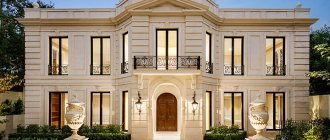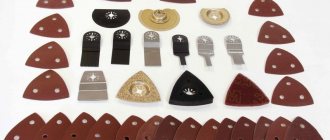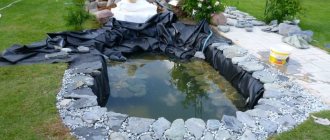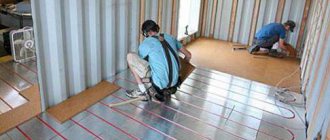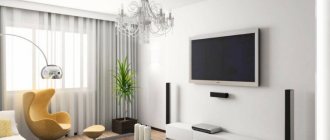There are two types of kitchens: classic and modern. This statement is based on my personal experience as a manufacturer and a simplified perception of everything related to the world of furniture makers. Some will correct me that there are other styles of kitchens. Agree. Only I specifically divided it not into styles, but into types of kitchens.
The classics include many styles: English and Provence, art deco and our customers’ favorite “palace style” and other style trends using wooden facades and, in part, MDF facades with a classic pattern (milling).
Art Nouveau includes any simple minimalist forms, colored facades made of plastic, acrylic, painted or film-coated MDF.
You can say a lot of flattering or not very pleasant things about all the listed facades, but for us there is only one main selection criterion (purely in Russian). Modern is bought for 5-6 years. According to world-renowned psychologists, bright and unnatural materials become boring during this period, which is confirmed by our clients who have purchased these kitchens. You'll never get tired of the classics
Modern is bought for 5-6 years... Classics will NEVER get boring
First about the tree. Wooden facades differ from each other not only in the type of wood, but also in the assembly technology and painting technology of this furniture material.
Solid wood facades: types and features
Solid facades are made from a monolithic piece of wood, hence their record strength and durability. During processing, the facade is given the desired shape and design.
Along with solid ones, stacked facades are also popular. They are made of wood, but not from one board, but from many thick bars. The fragments are connected to each other using a special technology, forming a monolithic fabric. Several types of wood can be combined in one product, creating an original effect.
Regardless of the production technology, all these facades share the traditional qualities of natural wood:
- environmental friendliness - they create warmth and comfort, emit a subtle, barely noticeable aroma of wood. Since the material is natural, it is not dangerous to humans, does not emit dangerous toxins and does not provoke allergies;
- strength - it is not easy to break furniture made of solid wood, and scratches and chips can be hidden behind varnish;
- resistant to temperature changes and aggressive conditions;
- high price.
I think you will also like the article: Eat healthy and healthy every day!
Wooden facades also include veneered facades, covered with a thin layer of natural wood. The base of the structure is made of MDF or chipboard, the top decorative layer is made of veneer. With this solution, the facade completely preserves the unique texture and pattern of wood. Visually, solid and veneered furniture facades are indistinguishable from each other.
Veneering greatly reduces the cost of products while maintaining most of the original properties. Allows you to create furniture from expensive noble wood species at a reasonable price.
Paneled facades - what are they? Specifics and advantages of the design
Framed facades are structures consisting of two components: a base and a frame.
Such designs are sometimes called paneled - from the word “panel” (German “fullung” - “filling”), which means a quadrangular-shaped decorative component placed in a frame.
The positive qualities of frame panels include:
- reducing the weight of furniture due to the use of thin and light panels;
- excellent operating qualities - resistance to high temperatures and air humidity;
- the opportunity to save money by purchasing a facade with an expensive external coating and a very cheap base;
- high elegance and a huge selection of colors.
The facades of physical panels are not constructed heavily: thin panels are placed in the frame, which is already ready, and are fixed in specialized grooves using shaped overlays. To secure the structure, specialized glazing beads are used, which are placed on glue or nails.
Paneled
Paneled facades are structurally a frame made of natural wood, which is filled with cheaper material. This “filling” is called the panel. The frame of paneled facades is made of wood of different species and has a thickness of 18 mm. For panels, chipboard, plywood, MDF, glass, natural or veneered wood are used. The thickness of the panel is 10 mm or more.
I think you will also like the article: About the Agusha company
Product Features:
- strength and durability;
- aesthetic appearance, variety of finishes;
- veneered furniture is lighter than wood;
- several times cheaper compared to a solid array;
- rich design possibilities.
Paneled inserts can be flat, voluminous, stacked or floating. The latter have almost the same thickness as the frame, therefore they are the most durable and reliable.
Which type to choose depends on many factors: the type of furniture, the conditions where it will be used, the desired visual effect. Finally, it depends on personal preferences and financial potential. In the catalog https://massiv-bataisk.ru you can choose a furniture facade made of solid wood to suit every taste.
Production of solid facades
Solid front panels for the kitchen are made either from furniture board (chipboard) or wood. With slab materials, everything is simple: you need to measure the openings of the kitchen cabinets and order blanks of the appropriate size. Chipboard cutting companies will glue the edges for an additional fee; if you wish, you can perform this operation yourself.
At home, you will need an iron, a sharp knife, a block of felt, and a paper edge (the plastic edge will not stick with the iron). The edge strip is cut along the length of the side with a margin, applied and glued by running a hot iron along it. While the edge has not cooled down, pressing it, smooth it with a felt block, then cut it from the sides and ends with a knife, then go through the edges with a fine abrasive.
Solid wooden facades
For successful work, you will need a dry edged board (it is better if the material is calibrated in thickness, otherwise you will need a jointer with a thicknesser), PVA glue, stain, and varnish. Tools also needed:
We make a shield for the panel. Preparation of material
A classic solid wood panel is a laminated board made from edged boards of a certain thickness. You can do it yourself, provided you have experience working with wood and the necessary hand and mechanical tools. We begin the manufacturing process with the selection of lumber.
It is better to use fresh, well-dried wood for the production of doors. Its technological humidity should be 8-12%. Only in this case can we guarantee the absence of mechanical stress in the finished panel, which can ultimately lead to the formation of cracks and destruction of the panel.
Repair of harness
Despite the fact that the harness consists of very dense and wide bars, these elements are also subject to wear. Fragments of the harness are restored by installing new bars equipped with straight spikes. The insertion is made using glue, after which the structure dries, the structure is fastened with dowels and the final adjustment is made with a plane.
If the strapping bars are deformed or completely destroyed in the area of the vestibule, then it is necessary to carefully remove the worn fragment and make an insert of the desired shape from carefully dried dense wood.
The new part is secured in this way: in the upper part of the harness - with a straight single tenon, in the lower part - with a straight double tenon. For greater reliability, the joints can be secured with dowels. Share:
Features of door repair
The main reasons for restoration of wooden doors:
— subsidence of structures caused by failure of hinges or the use of unsuitable fasteners;
- weakly reinforced boxes;
— wear of various fragments of the door leaf;
— unsticking and warping of panels;
- poor opening and closing, the appearance of extraneous sounds.
— the need to eliminate deficiencies in external finishing.
Parts processing
We cut the boards with an allowance of at least 10 cm to the required length of the board. This can be done manually, on a circular or miter saw. After this, they must be carefully planed along the sides and edges. You can perform this stage of work yourself with a hand plane or jointer, but it is better to use mechanical devices - an electric planer or a jointer. After processing, the edges of the parts must be strictly perpendicular to the faces and have a rectilinear shape without depressions or humps.
The ideal tool for preparing parts for subsequent gluing is a thickness planer. They come in one, two, and four sides. The best and most expensive are representatives of the last group of instruments. After thicknessing, the edges will be ideal in shape and strictly parallel to each other.
Parts processing
Strengthening the box
According to building codes, the frame must be placed tightly in the doorway: if there are cracks, it will hang on the nails or fastening pins alone and will quickly become loose. In addition, a lot of heat is lost through such openings and the soundproofness of the room deteriorates.
If an empty space is found between the wall of the building and the door frame, repairs are carried out using wooden slats of appropriate thickness, carefully driven into the gap. You can also eliminate the gap with quick-hardening solutions - gypsum or cement. It is important not to forget that before carrying out this type of work it is necessary to dismantle the door frames.
If the door frame was initially poorly secured, then measures must be taken to further strengthen it. To do this, the racks and crossbars are aligned, carefully secured in this position, after which additional holes 50 mm deep are drilled. In such cases, it is recommended to make 3 holes into which steel pins are carefully driven so that they protrude 15 mm from the plane. Holes of such a diameter are also drilled in the door opposite these pins so that the fasteners do not prevent it from closing tightly.
Processing the edges of the shield. Easy way
A feature of the classic laminated panel is the edges beveled along the radius, smoothly turning into longitudinal ridges. During assembly, they are inserted into grooves of the appropriate shape and size, usually without glue. This must be done so that the wood can “breathe”, slightly changing its size without the threat of destruction.
You can make radial bevels on the edges of the future panel with your own hands in several ways. The first, the simplest and most accessible, involves the use of a stop and a stationary circular saw. If you don’t have a circular saw, you can fix an electric circular saw on the table.
The saw blade should protrude by 10-15 mm, no more. It is better to start with a 5 mm lift and gradually increase it. The stop is installed perpendicular to the blade at the maximum point of its lifting at an angle to the plane of the disk of 60°. By moving the glued blade at the required angle to the direction of rotation, its edge will be cut along an arc of a circle, the diameter of which is equal to the diameter of the saw. Having practiced beforehand, you can make a very high-quality door panel with your own hands.
After fairly rough processing with a saw blade, you will need to qualitatively polish the resulting bevel. To do this, you can use sandpaper glued to a mandrel of a suitable shape or a sander.
Processing the edges of the shield. The hard way
The use of a milling machine will allow you to obtain high-quality bevels of more complex shapes. There are special sets of cutters for making paneled doors with your own hands. The cutting tool for processing bevels is called a figurine cutter. This name comes from the name of the plane, which was used in the old days to make panels with your own hands without power tools.
Modern production does not involve extensive use of manual labor. They try to minimize such operations using various mechanisms and power tools. A milling machine with straight and reverse curved cutters will allow you to make a curved edge of the shield and door bars. The high rotation speed of the cutting tool allows for minimal roughness of the machined surface, which reduces the time of subsequent grinding.
Elimination of door sagging
The most common problem that owners of wooden doors often encounter is their sagging and hitting the bottom of the frame. In this case, it is worth inspecting the hinges very carefully - during installation, screws with incorrectly selected threads could be used. Such fasteners quickly unscrew from their seats, which leads to loosening of the hinges. This situation implies the easiest way to correct the defect - select screws with sharp threads and screw the hinges tightly into place. If necessary, it is possible to replace standard screws with longer ones, but with the same head diameter.
Watch the video on how to repair wooden doors
When choosing fasteners, it is very important to pay special attention to their thread - for repairing doors, only screws with sharp threads are suitable, which cuts well and does not crush wood fibers.
Also quite popular parts used in restoration work on wooden doors are hinges. Their design consists of a hinge and two cards with holes for screws.
As a rule, hinges come in three types: with a rod embedded inside the hinge; with a rod embedded in one card and with a removable rod. When repairing a wooden door, you must ensure that both cards are in the same plane with the door bar, otherwise it will not close tightly.
Shield gluing technology
In order to make a high-quality wooden shield with your own hands, you will need good wood glue. Binder production in our country is well developed; in addition, there is a large selection of imported analogues. Before use, you must check the quality of the available glue. To do this, they connect two unnecessary pieces of wood and check the strength of the connection under impact load. A good cool weld should take a beating. Possible destruction can only occur along the wood fibers.
To glue the shield together, you will need clamping devices called clamps or clamps, which you can purchase ready-made or make yourself. There are two types of them used - screw and wedge. In the first, the compression of the parts to be glued occurs due to the rotation of the threaded screw, in the second - due to the hammering of the wedge stop. Using any type you can obtain a high quality connection.
Apply glue to the edges of the prepared boards and distribute it evenly using a brush or flat spatula. We lay the boards close to each other so that the edge with glue of one part is in contact with the dry edge of the other. Next, we compress the shield until the glue is partially squeezed out of the seams and leave until the glue dries completely, usually for 12-24 hours.
After gluing, the finished fabric must be planed with your own hands. A wide-format thicknesser with a planing width of up to 600 mm will help ensure ideal flatness of the part. Instead, you can sand the blade with an electric planer or belt sander.
Assembly and gluing of all parts
Selecting material for the panel
Quality material is one of the most important aspects of work
More than twenty different types of wood are used in modern carpentry. Each of them has certain properties, aesthetic and technological features. Both soft and hard wood species are used to make doors. The first group includes pine, linden, and aspen. The second - oak, beech, mahogany.
Coniferous doors are most common in modern, inexpensive interiors. Pine is installed in residential and administrative buildings, linden and aspen, characterized by high moisture resistance, are installed in baths, saunas, and steam rooms. Their production is not difficult; their low strength does not require frequent sharpening and adjustment of the cutting tool. The cost of pine wood materials makes it possible to make relatively inexpensive products that are affordable to every ordinary buyer, including with your own hands.
Doors made of hardwood have a higher cost due to the high hardness of the material and the complexity of the processing process. Oak or beech lumber is significantly more expensive than softwood lumber. The cost of mahogany wood exceeds them due to the additional costs of sea transportation. These aspects classify doors made from solid wood as elite products available to a limited number of buyers.

